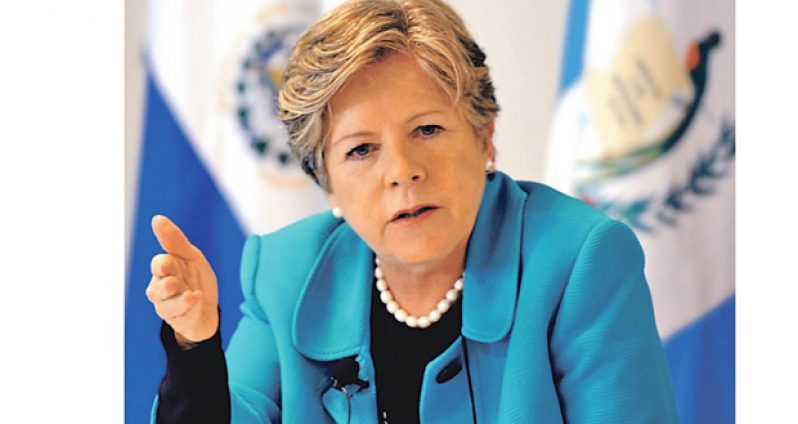THE richest 10 per cent of the population in Latin America and the Caribbean pay an exceptionally low personal income tax rate compared with the rate applied to waged workers, according to the research ‘Time to Tax for Inclusive Growth’, which was recently presented by the Economic Commission for Latin America and the Caribbean (ECLAC) and OXFAM.In some of the region’s countries, the highest income group pays between 1 per cent and 3 per cent of their gross income as income tax (compared to around 10 per cent in other countries).
According to the document, in the United States, the actual rate for the richest 10 per cent is 14.2 per cent (with the figure reaching over 20 per cent in some countries).
Alicia Bárcena, Executive Secretary of this United Nations’ Commission, said all the region’s countries should prioritise safeguarding the progress made by Latin America, and ensuring inclusive and sustainable growth.
As a result, ECLAC and OXFAM have signed an agreement to work together to promote and build a new consensus against inequality.
The cooperation agreement, which covers planning and implementation of joint activities in various areas, aims to strengthen consensus among governments and social organisations on the need to promote a policy agenda that tackles inequality and poverty in all their structural forms.
The report presented declared that tax collection in Latin America is too low, which means that most countries are not collecting enough to cover the population’s minimum requirements in terms of public health and education, or to achieve the Sustainable Development Goals (which are estimated to require a minimum of 20 per cent of GDP).
The region’s fiscal system encourages collection of consumption taxes such as VAT, but the study finds this places lower income groups at a great disadvantage compared with richer individuals and enterprises that benefit from tax breaks and ways of avoiding taxation.
According to Simon Ticehurst, OXFAM Director for Latin America and the Caribbean, between 2002 and 2015, the fortunes of multi-millionaires in Latin America grew an average of 21 per cent per year (or six times faster than GDP in the region).
SHAMEFUL
Much of this wealth is exempted from taxes in tax havens. It is shameful that most of the region’s countries continue to increase the rate and number of goods affected by VAT, instead of tackling tax evasion and reducing tax breaks enjoyed by the richest, he said.
The joint research found that governments treat multinationals favourably in taxation matters in terms of giving them excessively generous rate reductions in corporation tax. According to some calculations, the tax burden for national enterprises is double that levied on multinationals.
In the document, OXFAM and ECLAC call on Latin American and Caribbean Governments to rebalance direct and indirect taxes so that those with the most (rich individuals and large companies) also pay the most. This means transferring the tax burden away from workers and consumption towards capital and wealth by taxing financial transactions, inheritance, and capital gains (as well as reviewing the incentives received by multinationals).
According to Ms Bárcena, an archaic and dysfunctional tax system also gives wealthy companies and individuals great opportunities to avoid paying their fair share of taxes.
According to ECLAC data, evasion of income tax, corporation tax and VAT costs Latin America and the Caribbean over US$320B per year (or 6.3 per cent of GDP). This means that Latin American countries are losing over 50 per cent of their income tax revenues. Many of these resources end up in tax havens which hide large volumes of capital that should be invested in improving the quality of life of citizens.
Today’s report urges Governments to halve tax evasion and avoidance in five years, and reduce these by three-quarters in 10 years by taking part in the global debate to redefine the international fiscal system. This includes eliminating tax havens and enabling all of the region’s countries to collect at least 20 per cent of their GDP.



.jpg)









